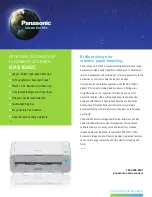
PANNORAMIC® DESK FLASH DX
OPERATION
50
INFORMATION FOR USE
–
FOR INVESTIGATIONAL USE ONLY.
THE PERFORMANCE CHARACTERISTICS OF THIS PRODUCT HAVE NOT BEEN ESTABLISHED.
Preparation of tissue and the glass slide
Caution!
The quality of tissue and slide preparation highly affects the quality of the final digital image.
Laboratory instructions and protocol must always be followed during tissue preparation.
The tissue after the preparation must not be damaged in any way (torn, bubbled, wrinkled,
folded, over exposed, poorly- or over-stained) and has uniform thickness).
During preparation make sure to take these key criteria into account so that the final glass will
meet the expected quality:
•
When cutting the tissue with microtome, the thickness must be set between 3-
5
μ
m. Use sharp blades only for cutting, and cut slowly, so the uniform thickness is
ensured.
•
Tissue is properly stained.
•
Use clean glass slides.
•
Place the tissue on the glass slide avoiding wrinkles or folds, keeping at least 3mm
distance between the tissue and the slide edges.
•
The tissue is wet-mounted (permanent) on the glass slide.
Figure 21: Correct and incorrect tissue placement
•
If the tissue has elongated shape, avoid placing the tissue diagonally, on the slide
to shorten scanning time.
Figure 22: Preferred tissue orientation
•
Use coverslips as specified above (see Table 5: Slide and coverslip specifications).
•
When placing the coverslip, leave a 5mm gap between the tissue and the label
area, and a 1mm gap along the edges of the slide.
•
Make sure that there are no air bubbles underneath the coverslip.
















































